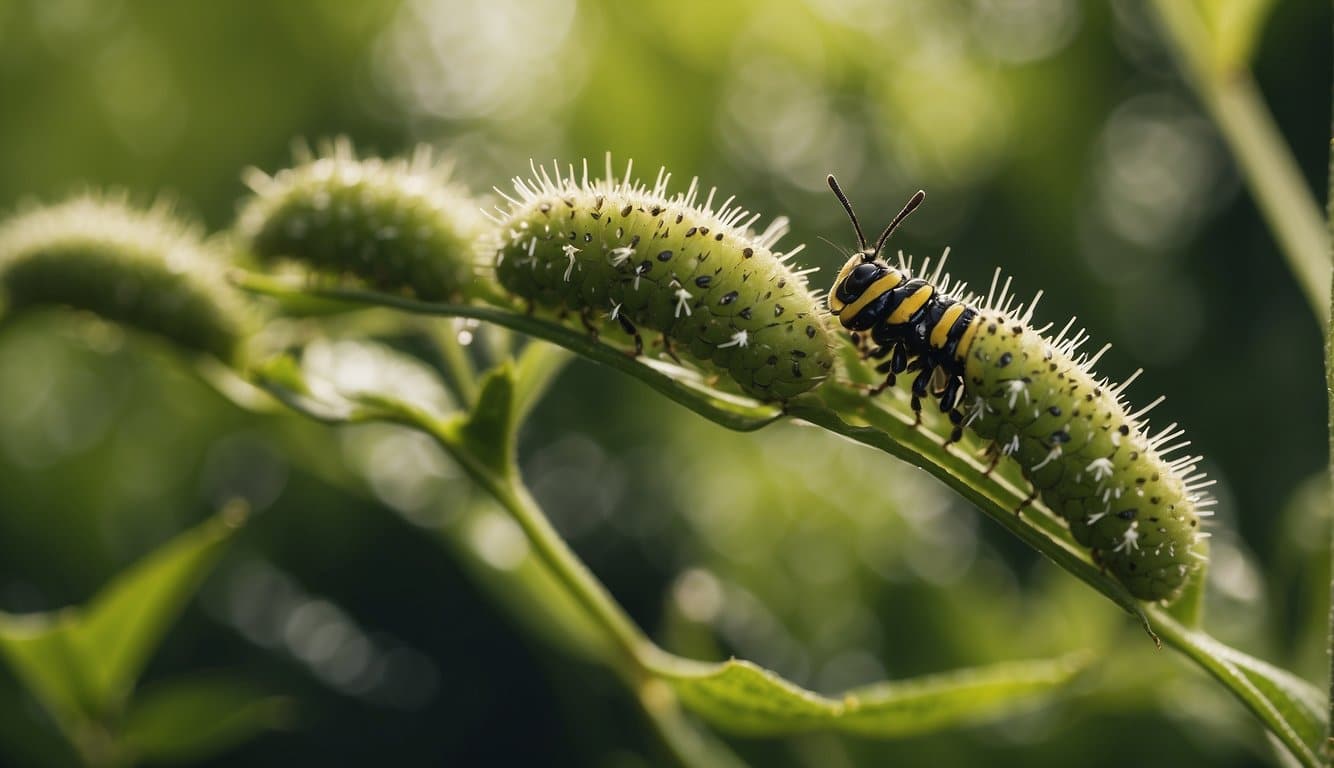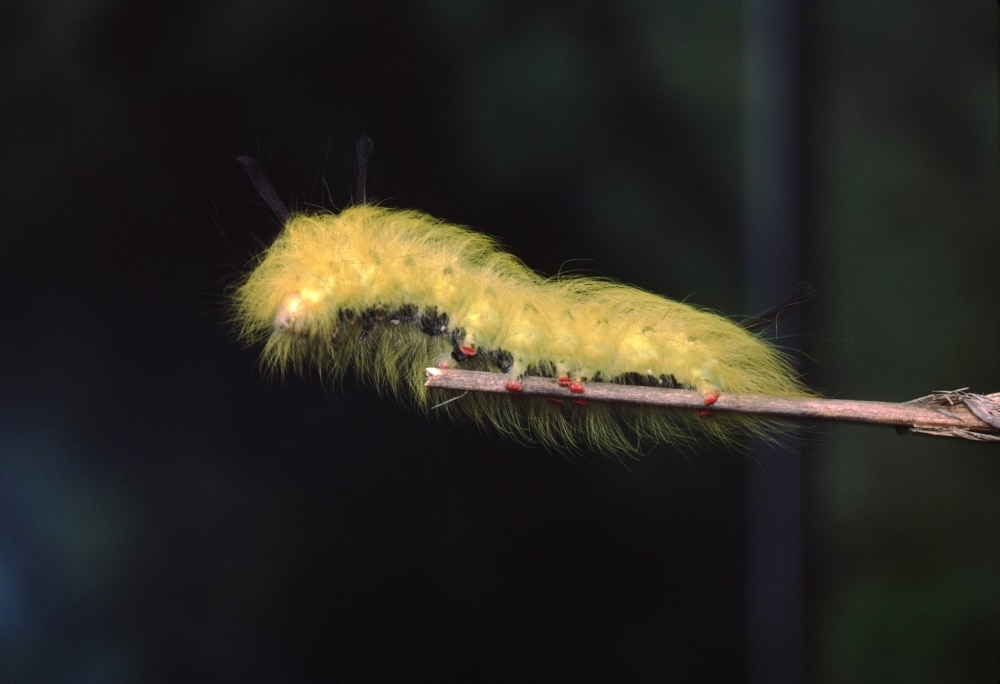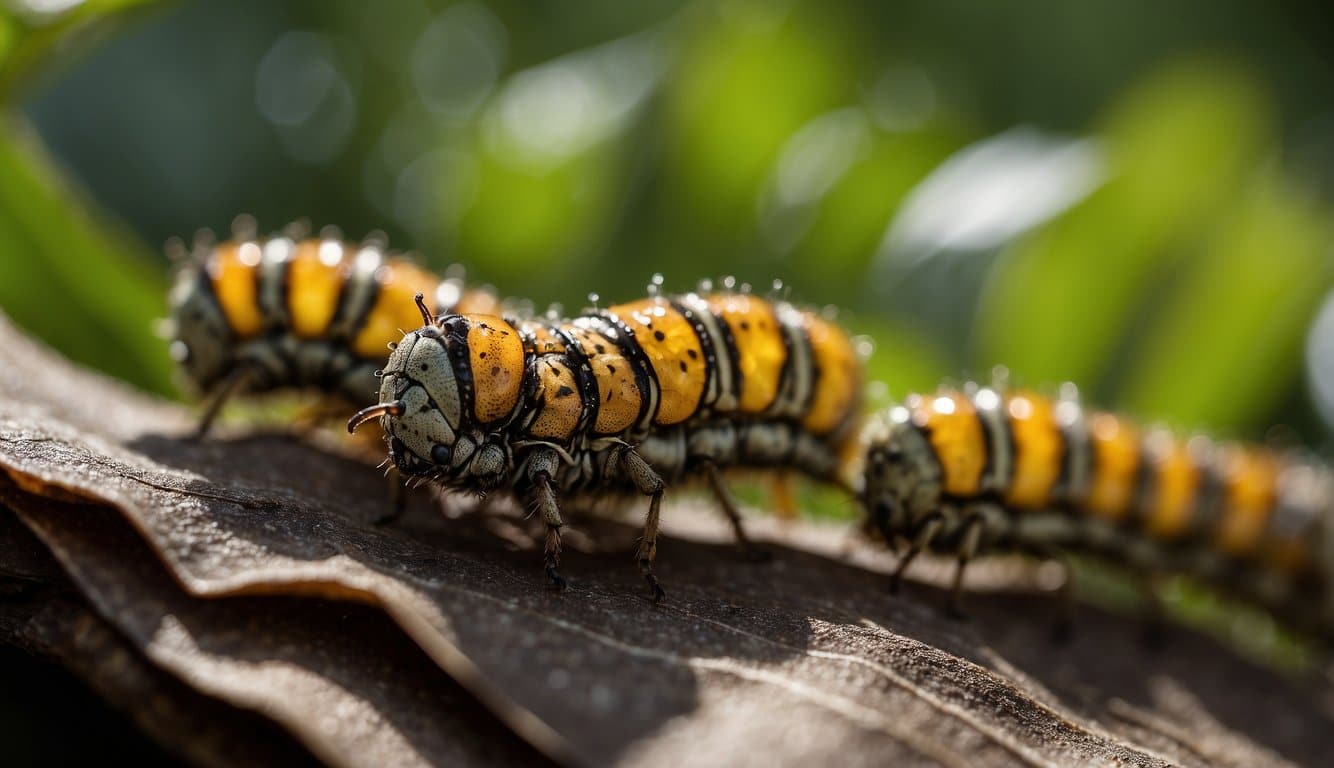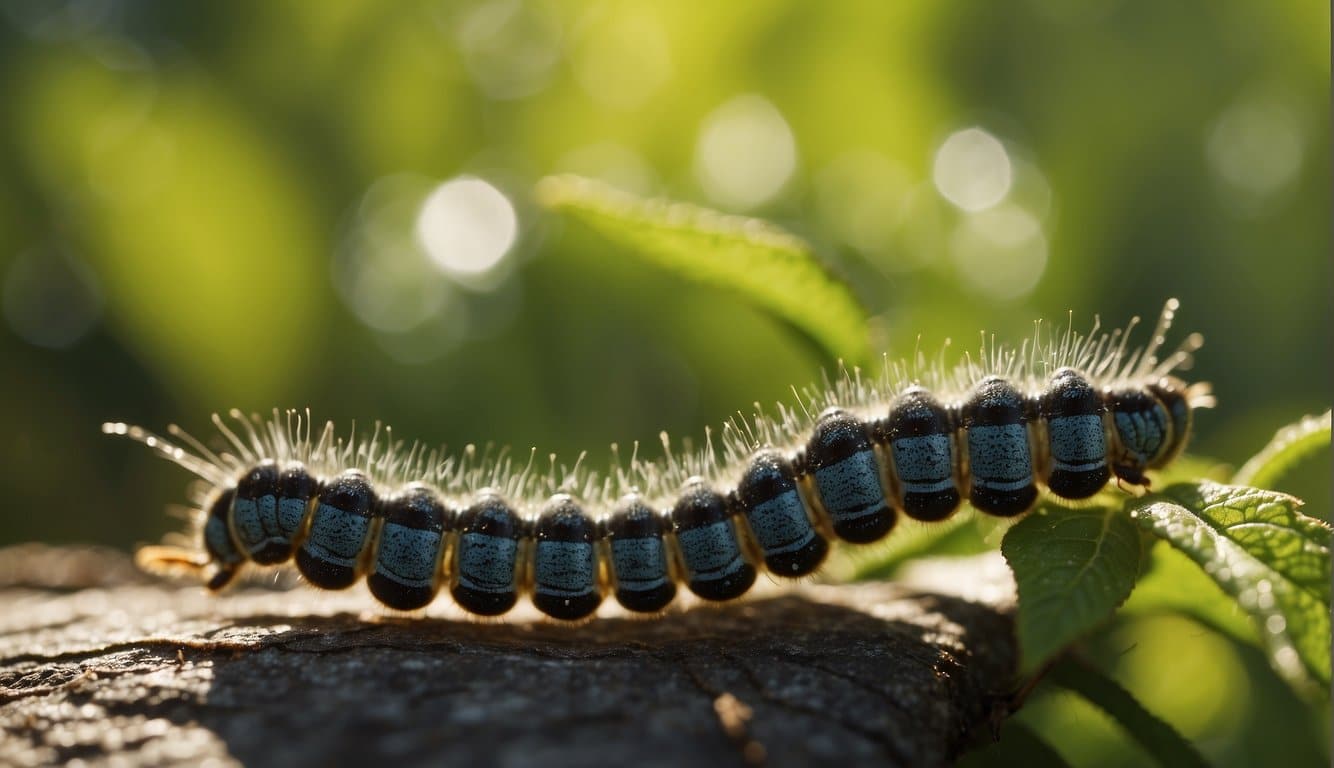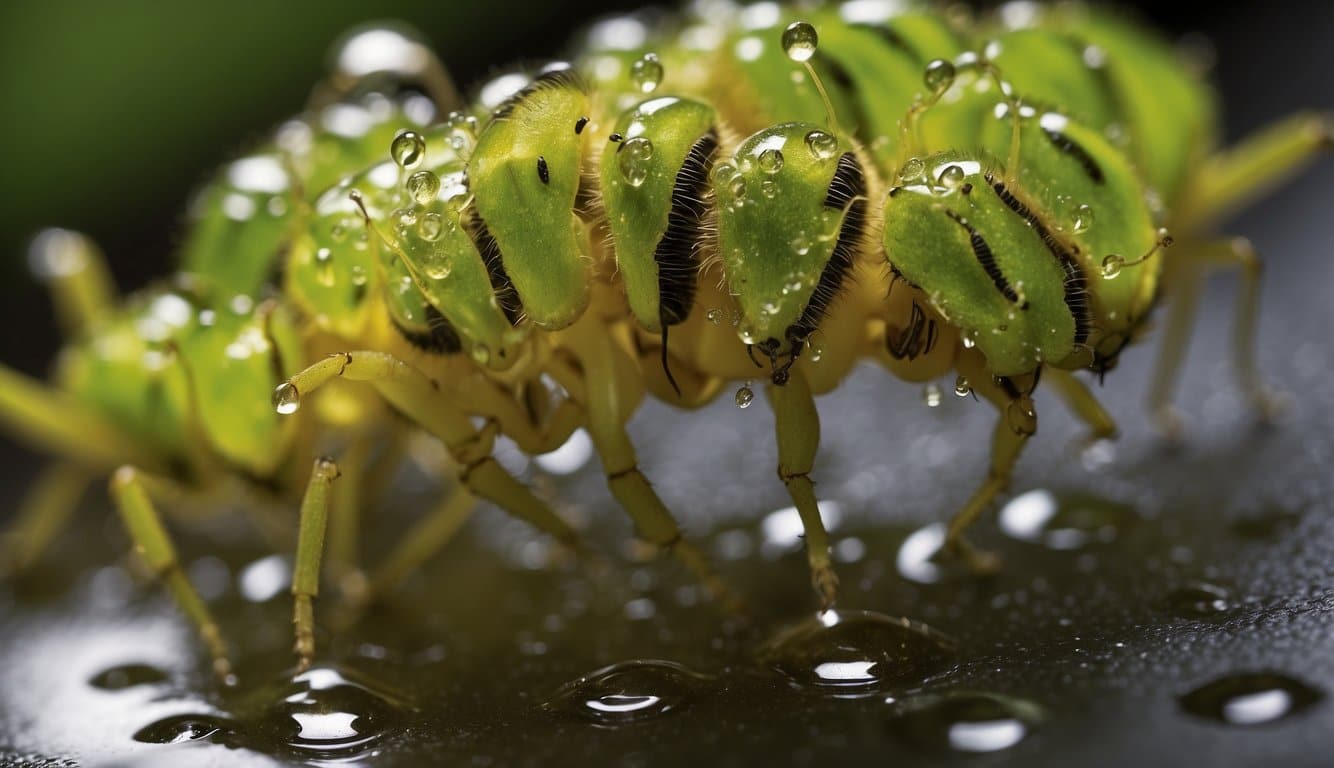Caterpillar infestations can pose a significant challenge for gardeners seeking to protect their plants.
In the quest to find a natural and effective solution, vinegar is often considered a potential remedy. Its acidic properties suggest it could be an unconventional method to deter or even eliminate these leaf-munching insects.
However, the reality of using vinegar as a pesticide is more complex.
Although vinegar contains acetic acid, which can harm caterpillars, its application must be approached with caution to avoid damaging the very plants one intends to save.
Vinegar’s potential as a pest control agent is limited by its non-selective nature and the risk it poses to plant health.
While dilution may mitigate some of the adverse effects, the correct proportions and application techniques are crucial for achieving the desired outcome without harming the environment.
Given these considerations, along with the availability of other methods for addressing caterpillar problems, it’s important to make an informed decision on whether the use of vinegar aligns with the gardener’s goals and values.
Key Takeaways
- Vinegar may be used as a natural approach to caterpillar control, but its efficacy requires careful application.
- The non-selective nature of vinegar means it can harm plants as well as pests, necessitating cautious usage.
- Alternative methods for managing caterpillars are available that may better suit environmental concerns and gardening objectives.
Efficacy of Vinegar as a Pesticide
Vinegar’s potential in pest control, particularly for killing caterpillars, hinges on the concentration of acetic acid and the method by which it is applied.
The following subsections detail specifics on these aspects and its variable effectiveness across different caterpillar species.
Acetic Acid Concentration
The primary component of vinegar that gives it pesticidal qualities is acetic acid.
Vinegar typically contains 5% acetic acid, which can dry out plant tissues when applied directly.
To minimize the risk to plants while targeting pests, higher concentrations of acetic acid may be more effective, but also carry a risk of harm to the ecosystem, particularly bees and other pollinators.
Contact Method
For vinegar to act as an insecticide, it should make direct contact with caterpillars.
A spray bottle can be used to apply the vinegar solution onto the pests, ensuring full coverage is crucial for effectiveness.
However, the foliage should be avoided to prevent potential damage to the plants.
Application should be done during optimal weather conditions, preferably when caterpillars are most active.
Effectiveness on Caterpillar Varieties
Different caterpillar species may exhibit varying levels of susceptibility to vinegar.
While some caterpillars might be effectively controlled with a vinegar solution, others may be more resistant.
For this reason, it can be unreliable as a broad-spectrum pesticide.
Vinegar might be useful as a contact pesticide for specific caterpillar infestations, yet its overall effectiveness will vary and is not universally applicable to all caterpillar varieties.
Environmental Impact and Safety
When using vinegar as a means to control caterpillar populations, it’s vital to consider its interactions with the environment, specifically how it affects soil health, plant tolerance, and non-target organisms.
Soil Health
Vinegar, with its acidic nature, can alter the pH level of the soil.
A significant change in pH can negatively impact the soil’s microbial community, which plays a crucial role in nutrient cycling and organic matter decomposition.
It’s important to use vinegar sparingly and test soil pH regularly to maintain a balanced ecosystem for healthy plant growth.
Plant Tolerance
Plants exhibit varying degrees of tolerance to acidic substances like vinegar.
While some may handle a diluted solution without harm, others may suffer from leaf burn or withering.
Users should always conduct a small patch test on plants before applying vinegar broadly.
Non-target Organisms
Vinegar’s non-selective properties mean it does not discriminate between pests and beneficial organisms.
Beneficial insects, earthworms, and even pollinators can be adversely affected if they come into contact with vinegar.
Careful application is essential to ensure that only target pests, like caterpillars, are managed without harming these important ecosystem contributors.
Application Techniques
When attempting to control caterpillars with vinegar, a gardener must use precise application techniques to target pests without harming the plants or beneficial insects.
Direct Application
Spray Mixture:
- Ingredients: A solution combining equal parts water and vinegar.
- Method: Using a spray bottle, apply the mixture directly onto the caterpillars.
Points to note:
- Vinegar’s acidity can be effective in killing caterpillars on contact.
- Care should be taken to avoid over-spraying, as excessive acidity can harm plants.
Preventive Measures
Perimeter Spray:
- Ingredients: A mix of water, vinegar, and a few drops of mild dish soap.
- Method: Spray around the garden’s perimeter to create a barrier.
Plant Protection:
- Timing: Apply during the early morning or late evening when caterpillars are less active.
- Frequency: Regular application can deter caterpillars from returning.
Alternatives to Vinegar
Gardeners seeking effective caterpillar control methods may consider alternatives to vinegar that ensure the health of their plants and are environmentally conscious.
These alternatives include biological controls, targeted chemical pesticides, and cultural practices that can be integrated into garden maintenance routines.
Biological Control
Biological controls involve the use of natural predators or pathogens to manage caterpillar populations.
Bacillus thuringiensis (Bt) is a widely used biological pesticide that specifically targets caterpillars without harming beneficial insects.
Introducing beneficial insects, such as ladybugs or wasps, can also naturally reduce caterpillar numbers.
Chemical Pesticides
For more severe infestations, gardeners may resort to chemical pesticides, but should proceed with caution to minimize environmental impact.
Products containing pyrethroids or organophosphates are effective against caterpillars, yet they should be used sparingly and as per manufacturer’s instructions to avoid harm to non-target species.
Cultural Practices
Implementing certain cultural practices can prevent caterpillar outbreaks. These include:
- Monitoring plants regularly for early signs of infestation.
- Removing infested leaves or caterpillars by hand.
- Encouraging plant diversity in the garden to attract natural predators.
- Using floating row covers on vegetable beds to physically block caterpillars.
Frequently Asked Questions
When tackling the issue of caterpillars in the garden, many gardeners seek organic and chemical-free methods. This FAQ section sheds light on various strategies from natural repellents to homemade solutions aimed at effectively managing caterpillar populations.
What are effective organic methods for controlling caterpillars in the garden?
Organic gardening enthusiasts often use methods such as handpicking caterpillars off plants or employing beneficial insects like ladybugs and parasitic wasps, which prey on caterpillar eggs and larvae.
Other organic strategies include applying Bacillus thuringiensis (Bt), a bacteria that is harmless to humans and most beneficial insects but lethal to caterpillars upon ingestion.
Are there any plants known to naturally repel caterpillars?
Certain plants, including marigolds, peppermint, and lavender, possess strong scents that dissuade caterpillars.
Additionally, interplanting these with susceptible crops or using them as a border can provide a natural defense against caterpillar infestations.
What is the efficacy of neem oil as a treatment for caterpillar infestations?
Neem oil works by disrupting the hormones and feeding habits of caterpillars, which typically leads to a reduction in feeding activity and can eventually result in their death. It is considered effective when regularly applied to affected foliage.
How can I prevent caterpillars from consuming my plants without using chemicals?
Physical barriers such as floating row covers can create a barrier that prevents adult moths and butterflies from laying eggs on plants.
Ensuring a diverse and balanced ecosystem in the garden can also naturally curb caterpillar populations.
Can homemade solutions effectively eliminate caterpillars and if so, what are the recipes?
Homemade solutions, such as a mix of water and mild dish soap or a dilute solution of vinegar and water, can be sprayed directly onto caterpillars and plants to handle infestations.
Precise recipes typically involve a few tablespoons of soap or vinegar per gallon of water.
Are there specific scents or substances that caterpillars find repulsive?
Caterpillars are deterred by strong odors like garlic, peppermint oil, and vinegar. These can either be included in sprays or planted around the garden to create a scent barrier.
